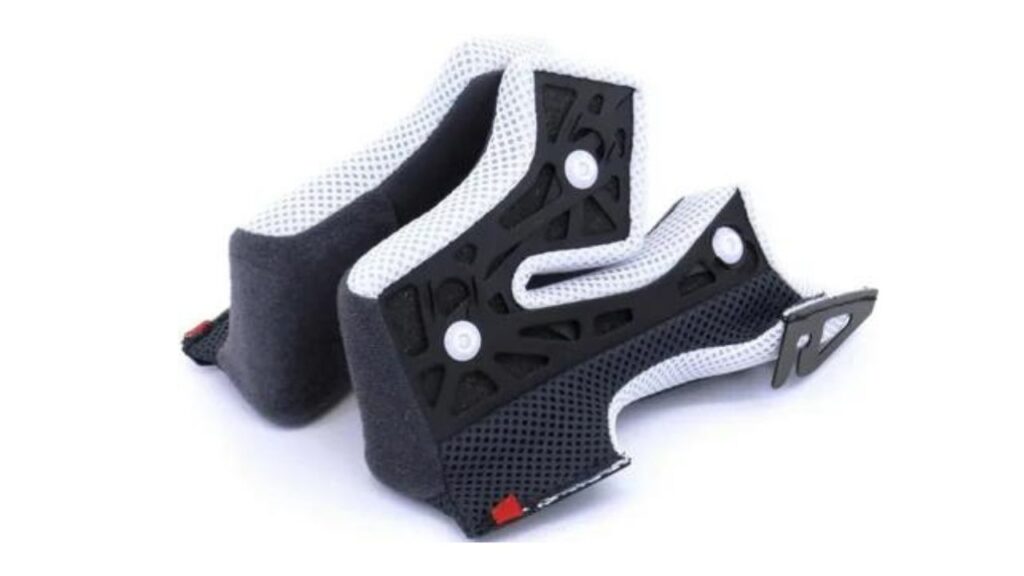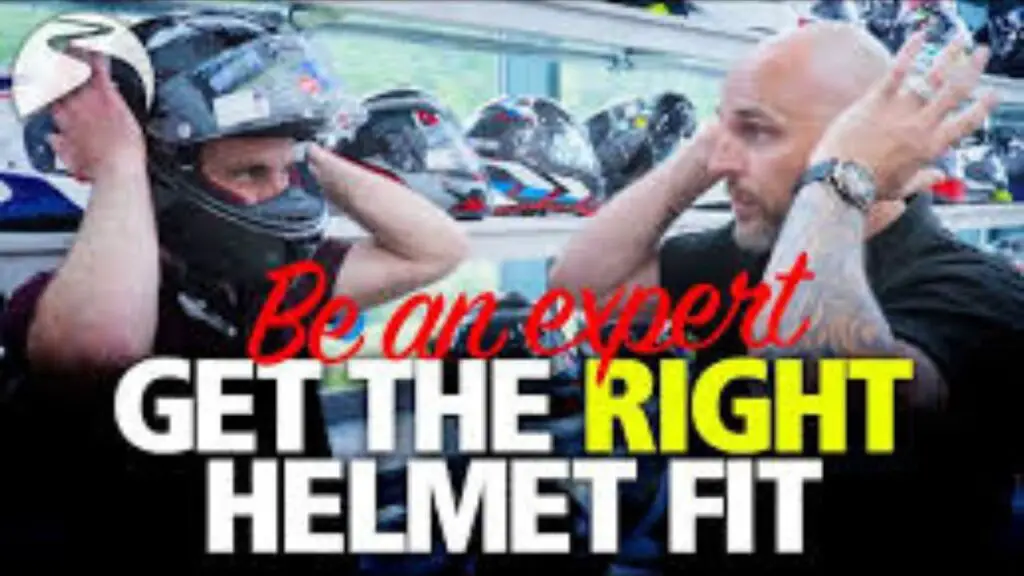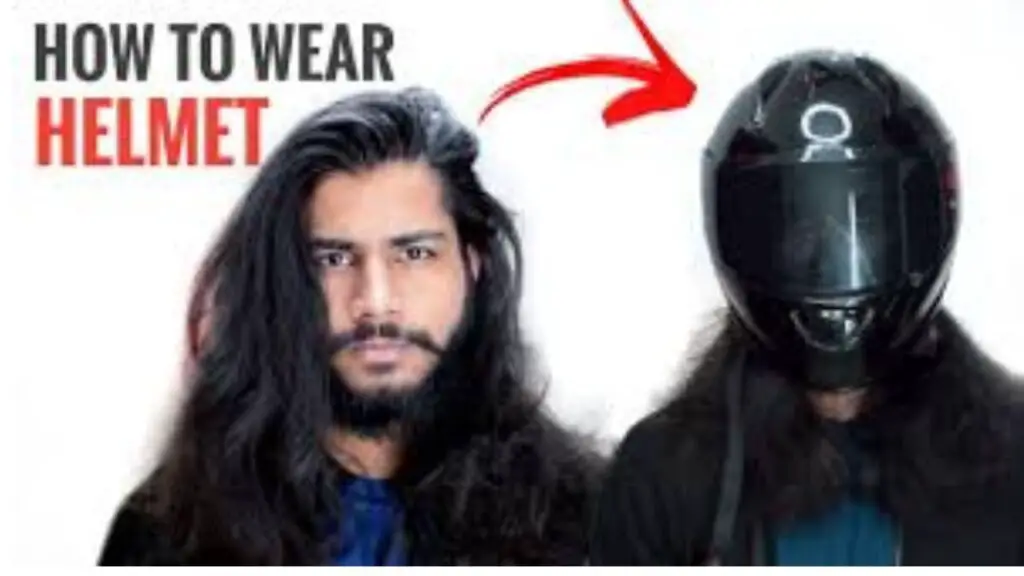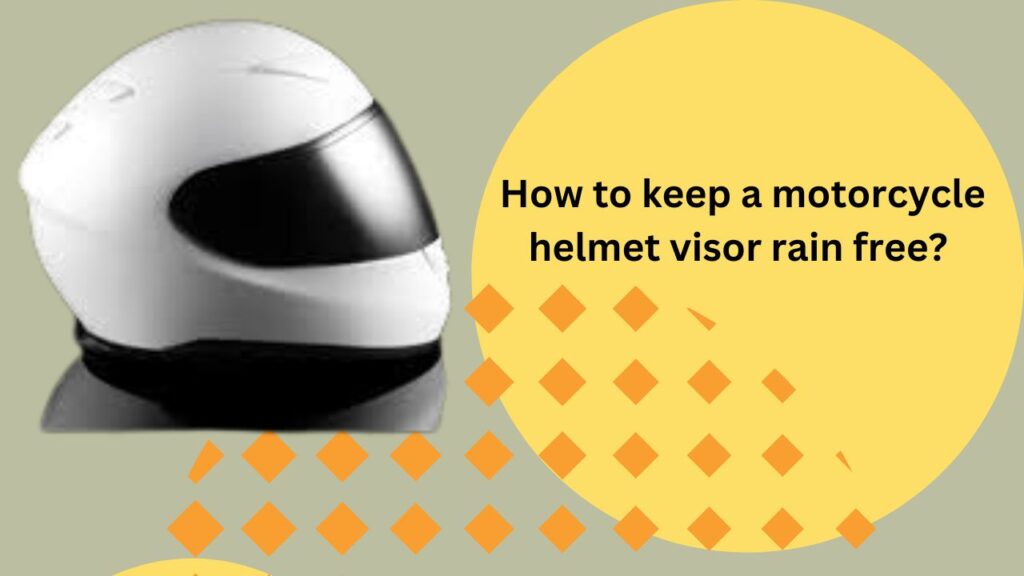Does the helmet squeeze your cheeks? Wearing a motorcycle helmet that properly fits is crucial for safety, but it’s common to wonder if it should squeeze your cheeks. A snug fit is generally recommended because it prevents any movement within the helmet, which can help absorb impacts. This tightness, especially in full-face helmets, should ensure that the helmet stays in place even in an accident. Many industry experts suggest a helmet should feel like it “hugs” your face, including the cheeks while avoiding any intense pressure points that lead to discomfort.
Some helmets even come with removable foam or replacement cheek pads so riders can adjust to their exact head size—a feature especially useful for those with chubby or thin cheeks. When I got my best helmet with XL pads to fit, removing an extra foam layer was key. It allowed me to avoid overly tight pressure around my cheeks while still providing secure protection.
For a more comfortable ride, consider using accessories like a bandana, earbuds, or goggles, which are compatible with helmets designed for an ideal fit. The helmet should allow for wearing earbuds without pressing too much into the ears, and a bandana can improve comfort by reducing skin contact with the padding, especially during long rides. It’s also worth testing the chin and side areas—they should stay in contact with your face but still be comfortable enough to prevent headaches or pressure spots.
Should a Full-Face Helmet Squeeze Your Cheeks?
A full-face helmet should firmly hold your cheeks without causing a painful squeeze. If the helmet feels snug but not tight enough to make you bite your side or struggle to chew gum, it’s a good fit. But if the helmet is too large or loose, it won’t protect well. I’ve personally felt the discomfort of a helmet that squeezes too much—it’s not just annoying but can be unsafe. Always aim for a fit that holds firmly but doesn’t feel like it’s crushing your face.
Why Helmet Fit Matters
A motorcycle helmet must fit correctly to provide maximum protection. The primary purpose of a helmet is to protect your head in the event of a crash. For this protection to be effective, the helmet needs to stay securely in place and absorb impact efficiently. An ill-fitting helmet, whether too loose or too tight, can compromise its safety features. An overly tight helmet can lead to discomfort, pressure points, and even headaches, while a loose helmet might not offer the necessary protection during a collision.
Key Aspects of Helmet Fit
To ensure a proper fit, a helmet should be snug around your head and cheeks without causing pain. Here’s a breakdown of key aspects:
- Snugness: The helmet should fit closely to your head, making full contact without gaps. This helps in preventing movement during a ride, which can be crucial in an accident.
- Comfort: While it should be tight, it should not create excessive pressure. The ideal helmet will secure your head without causing discomfort or pain. A good fit ensures that the helmet does not shift around or create gaps, which could affect both safety and comfort.
The Role of Cheek Padding
Cheek pads are designed to fill the space between your cheeks and the helmet’s interior. They play a vital role in:
- Stabilization: Keeping the helmet in place to prevent unwanted movement, which can be especially important during high-speed rides or in the event of a crash.
- Comfort: Adding to the overall comfort by reducing pressure points and distributing the helmet’s weight more evenly across your face.
Proper cheek padding is crucial for a secure fit. It ensures that the helmet stays in place and does not shift during movement, which could potentially reduce its protective capability.
Should Cheek Pads Squeeze Your Cheeks?
Cheek pads should exert some pressure on your cheeks to ensure a snug fit and to keep the helmet from moving. However, this pressure should be balanced:
- Moderate Pressure: The cheek pads should press firmly against your cheeks but should not cause significant pain or discomfort. If the pressure is so intense that it makes it painful to open and close your mouth or causes discomfort, the helmet might be too tight.
- Comfort: Ideally, you should be able to speak, eat, and move your mouth without pain. The goal is to find a fit that feels secure without being overly restrictive.
Types of Cheek Pads and Adjustments

Removable Foam Layers
Some newer helmets come with removable foam layers which offer greater flexibility in achieving a customized fit. This feature allows you to:
- Adjust Fit: Modify the fit by adding or removing foam layers according to the size of your cheeks. This customization can help accommodate different face shapes and sizes.
- Future-proofing: As helmet designs evolve, I’m hoping this feature becomes a standard across the industry to enhance comfort and fit options.
Replacement Cheek Pads
In addition to removable foam layers, you can often purchase replacement cheek pads for some helmets. This option is particularly useful if:
- Custom Fit: You need to adjust the fit after purchasing the helmet or if your face shape changes over time.
- Compatibility: Unfortunately, some helmets, like the Scorpion Carbon 1400, have fixed cheek pad sizes and shell sizes that limit this adjustment method. For example, the Large size has a unique shell size, and XL pads won’t fit.
Customizing Cheek Pads
If replacement pads aren’t an option, you might consider customizing the existing pads:
- DIY Adjustments: For instance, I removed the cheek pads and plucked a layer of foam through the backing layer to improve the fit. This method allowed the helmet to fit more comfortably.
- Older Helmets: In another case, I adjusted an older helmet by cutting the seam to access the foam. I then trimmed the foam to reduce pressure on my cheeks, resewed the seam, and achieved a better fit.
Finding the Right Fit

Initial Helmet Fit
When you first put on a helmet, it should feel very snug. This tightness is often necessary to ensure a good fit, but:
- Discomfort: It might cause some initial discomfort. However, if the helmet is so tight that you cannot comfortably open and close your mouth, it might be too tight.
- Fit Verification: Ensure the helmet doesn’t create painful pressure points or restrict movement, as this could indicate an issue with fit.
Breaking In Your Helmet
Some riders recommend breaking in your helmet by wearing it around the house or while watching TV. This process:
- Initial Tightness: Helps adjust to the helmet’s snugness and allows the padding to mold to your face over time.
- Comfort Adjustment: A helmet that fits perfectly might initially feel too tight for extended riding, so gradual adjustment is key.
Adjusting for Comfort
If you experience a compression similar to low-grade sinus pressure but without sharp spots:
- Comfort Check: This might indicate a proper fit. If you can chew gum comfortably with the helmet on, it might be too large and require adjustment.
Conclusion
A motorcycle helmet should indeed squeeze your cheeks to ensure a secure fit, but it should not be so tight that it causes pain or restricts movement. Features like removable foam layers and replacement cheek pads can help you achieve the right fit. Finding the right balance between snugness and comfort is essential for a successful helmet fit, contributing to both safety and enjoyment while riding
FAQs
How tight should cheeks be on a motorcycle helmet?
Yes, the cheek pads on a motorcycle helmet should be tight against the cheek. However, they shouldn’t be so tight that you’re biting your cheeks or so loose that you can wiggle the helmet around.
Should a motorcycle helmet squeeze your head?
Yes, a motorcycle helmet should be tight around your temples and cheeks to ensure it stays secure during a crash. However, it should not cause pain or make it hard to move your mouth.
How do you tell if a motorcycle helmet fits properly?
Yes, a motorcycle helmet fits properly if it is snug without causing red marks or deep indentations. When you shake your head firmly from side to side, the skin should move with the helmet, indicating a good fit.
Do motorcycle helmets touch your face?
No, a well-fitted motorcycle helmet should not touch your face. In full-face helmets, neither the helmet nor the face shield should come into contact with your nose or chin, even when the chin piece is pressed.
About the Author
I am Daniel Ken, an experienced motorcycle rider with 8 years on the road, and I specialize in writing about motorcycle helmets. I share expert insights on helmet safety, comfort, and style, helping fellow riders choose the best gear. My knowledge covers top safety standards, helmet types, premium materials, and advanced ventilation and noise reduction features.

